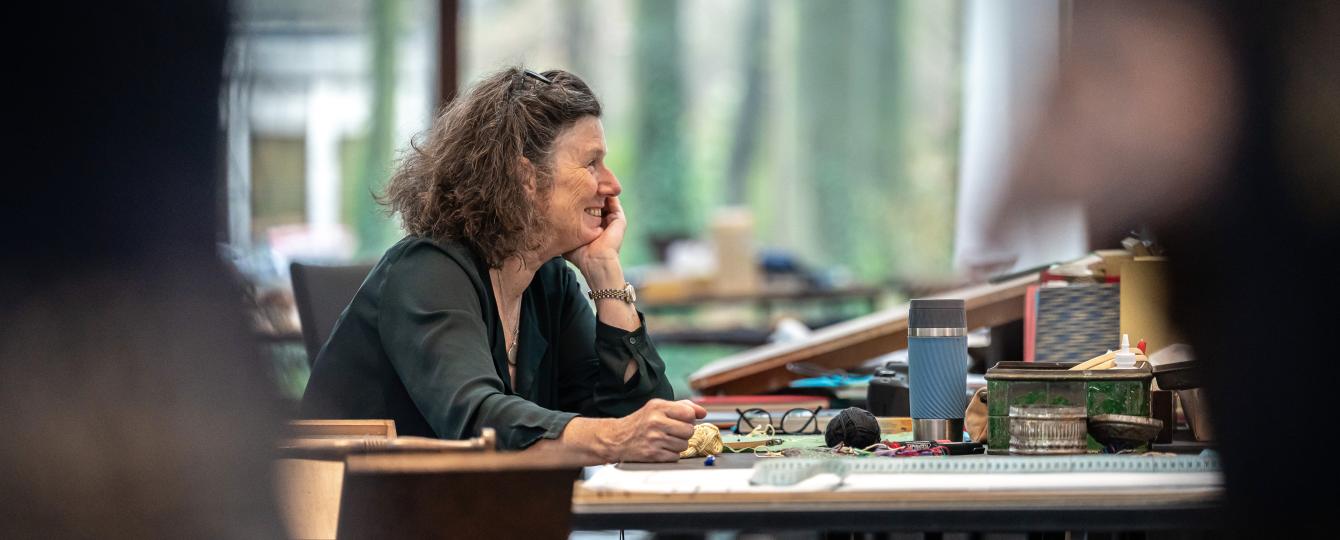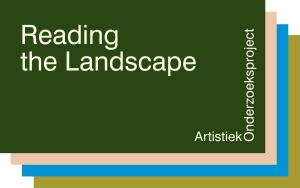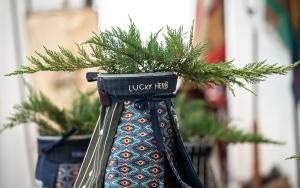'My work is actually about my ancestors. Not about who they are per se, but about ancestral strength and how we can use that today.’ (Wendy Morris, 2023)
Radio Hush Hush
Wendy Morris' Radio Hush Hush installation was acquired by the community of Flanders in 2022 and is on long-term loan to the Middelheim Museum. The artwork consists of six finch cages which, like radios, emit sound. We hear six different women talking, whispering and singing: they share their fragmented knowledge about plants with contraceptive properties. Women have been doing this for centuries: scattered across the continents, they clandestinely shared their knowledge of contraception with each other. That way, women who were enslaved could also exert a minimum of influence over their own fate.
With this installation, Wendy Morris links elements of her own family history to bigger stories and movements in history, such as the transatlantic slave trade and the loss of empirical knowledge of plants, for example. She has an eye for both the global and the local, the personal and the universal. The finch cages are linked to the Flanders folk tradition of "finch sitting": captive birds are made to compete and earn points in competition for a correct terminating flourish to their call. Morris uses this work to draw an analogy with slavery through captivity and the loss of one's own language.
ARP – Return Retrace Replant: A Middelheim Herball for a Midwife
In the Artistic Research Project (ARP) at the Middelheim Museum, Wendy Morris is working on the European part of her worldwide research 'Nothing of Importance Occurred, Recuperating a Herball for a 17th-century Enslaved Angolan Midwife at the Cape'. In this volume, she examines what historical knowledge women in Belgium, the Netherlands, France and Germany had of the use of plants that could inhibit fertility and the way in which this knowledge was passed on.
Starting with seemingly forgotten knowledge, Morris draws attention to eight specific plants at the Middelheim site that women used to prevent or terminate pregnancy. She supplements this selection with other indigenous medicinal plants with similar effects. At one time, knowledge about these types of plants was widely disseminated by midwives, herbalists, angel-makers and quacks. These individuals were often discriminated against by the scientific community, yet their knowledge and data are of crucial importance.
Specifically, Wendy Morris is working on a Middelheim Herball for a Midwife, a 'Middelheim herbarium for midwives'. Using ancient Greek and Roman writings, herbaria and apothecary recipes, folk songs and proverbs, criminal records and diaries, she reconstructs the complex histories of these plants and makes them visible again. The contraceptive powers were sometimes concealed within the descriptions of herbaria themselves: in a kind of coded language or veiled description to avoid the word 'abortive'.
Even today, we can still learn a lot from plants. The artist regards plants as active allies of people and invites us to imagine a new relationship between plants and people. For the time being, her research at the Middelheim Museum will therefore culminate in a special performance: a procession that honours plants and botanists.
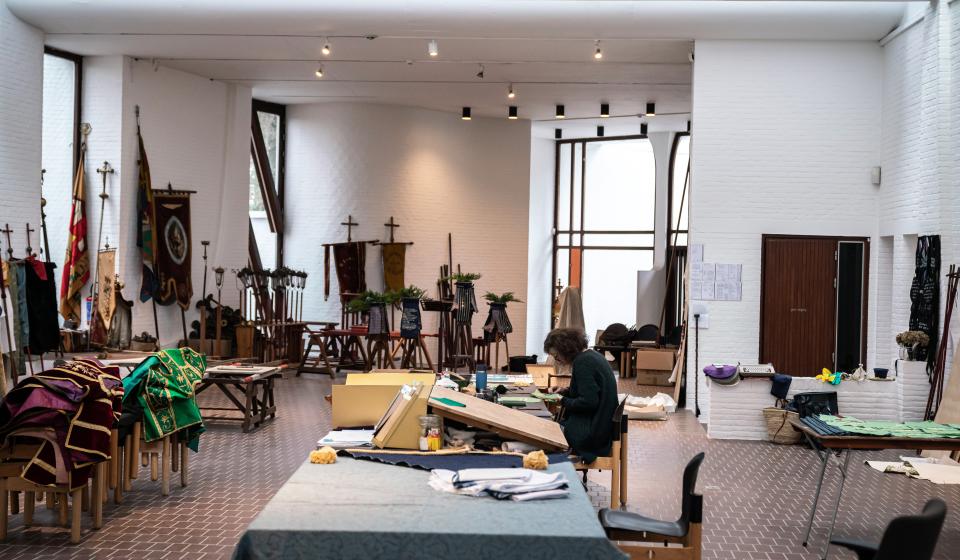
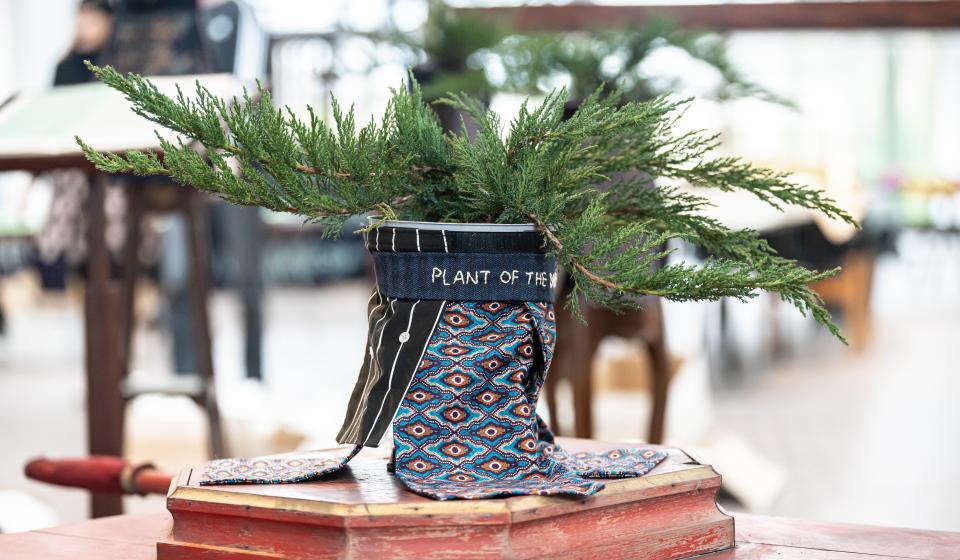

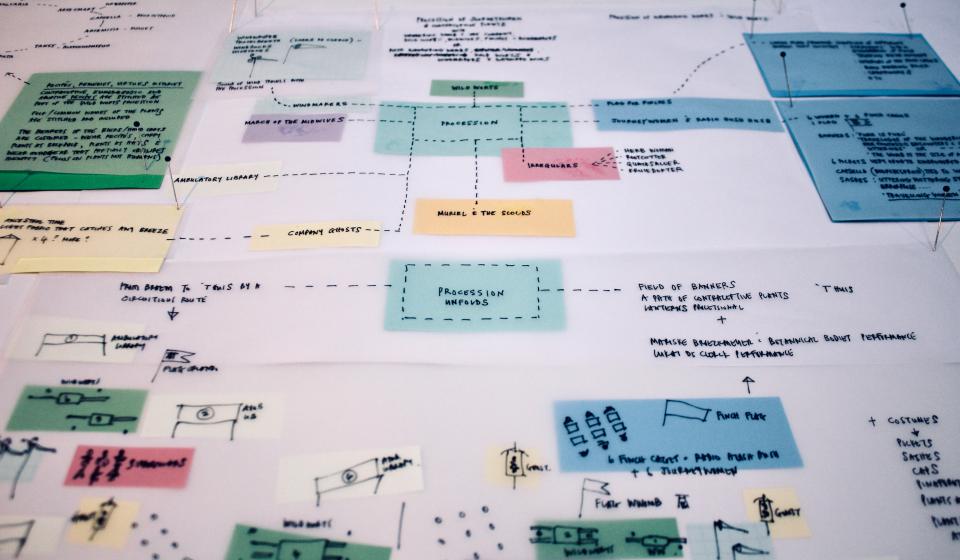
A performative procession
Since February 2023, Wendy Morris, along with team of volunteers and interns, has been working her way through a collection of historical processional materials, which she obtained from two church communities in Antwerp. Together, they are reworking the materials and imagery of both religious and non-religious manifestations into a contemporary choreography in which, unusually, not people, but plants are given the central role.
The procession, which was staged on 24 June 2023, is not just a parade or a pageant. It is primarily conceived as a swirling wind through the landscape that aims to connect people with each other, as well as with plants. Banners with texts will be carried in the performance: a statement by the artist about the crucial role of language and written words in this context in which knowledge was only passed on secretly, orally, often concealed or even withheld. The performance activates and shifts our perspective of the landscape and the stories to be found there, about both humans and non-humans. The procession invites, connects, repurposes and moves, just like the stories in and about the landscape.
Wendy Morris seeks to resurrect and redistribute 'forgotten' knowledge with the existing Radio Hush Hush audio installation, the new performance, and by extension, her broad research practice. As such, she potentially sheds new light on contemporary debates about women and autonomy over their own reproductivity.
Credits
Wendy Morris' project is generously supported by ErfgoedLab Antwerpen, Buurtwerk Posthof non-profit organisation, St Lambertus church community (Antwerpen-Dam), St Francis of Assisi church community (Merksem) and MoMu.
With thanks to: Tundé Adéfioye, Mariske Broeckmeyer, Leonoor De Schepper, Raf Lauwers, Sophie Gallant, Dilek Santy en Charlotte Schramme (interns of KU Leuven), Louzan Khalikova and Wessam Ashour (volunteers), Julie Delbeke, Martha Verleyen, Nele Möller, Alexandra Crouwers and Joeri Verbesselt, and all participants and spectators of the procession.


